Figure 1. A comparison of longitudinal cardiac measurements of 74 HAART-exposed children from the CHAART-2 study and 140 HAART-unexposed children from the P2C2 HIV study cohort.
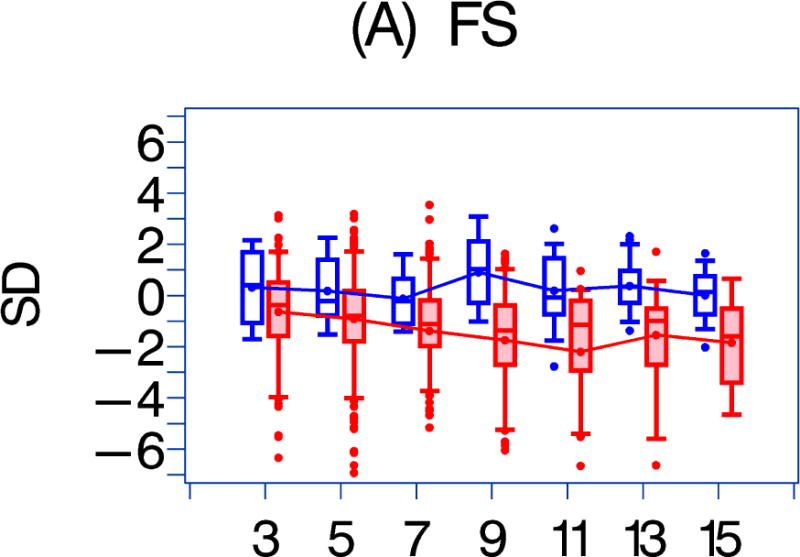
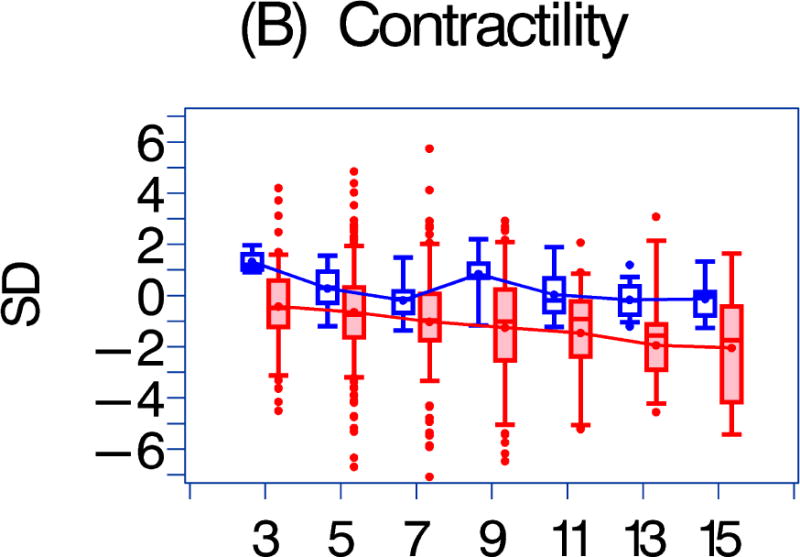
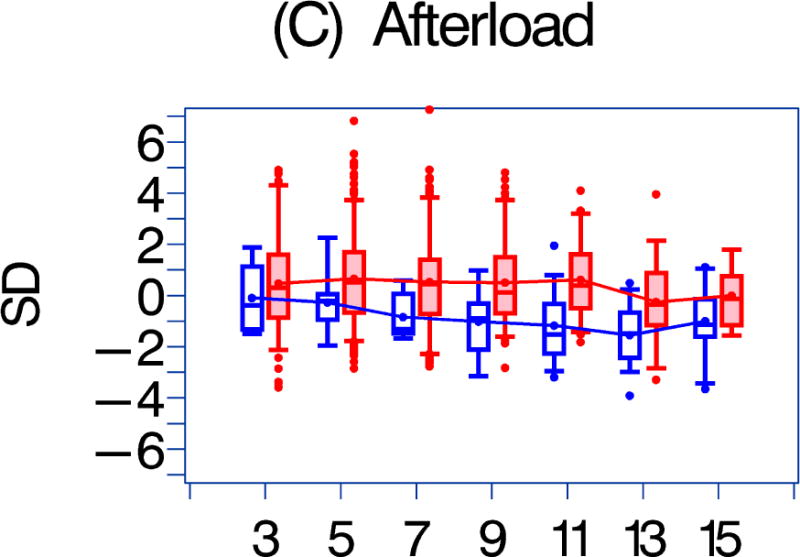
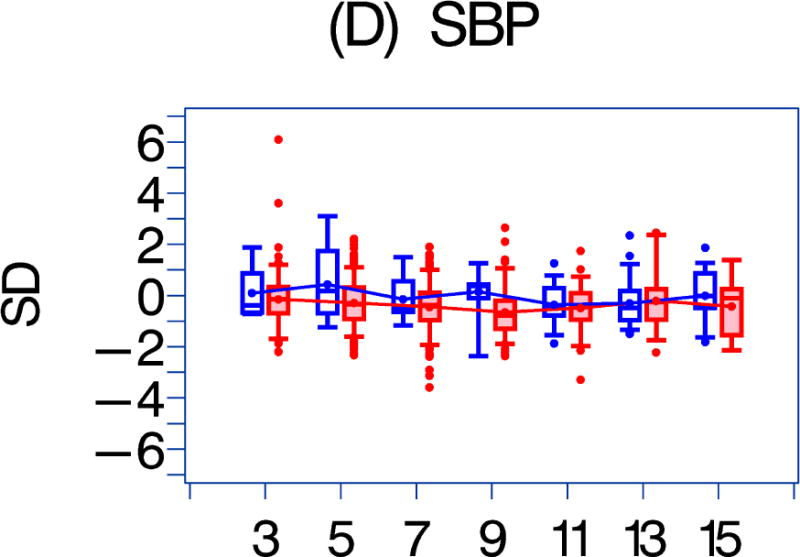


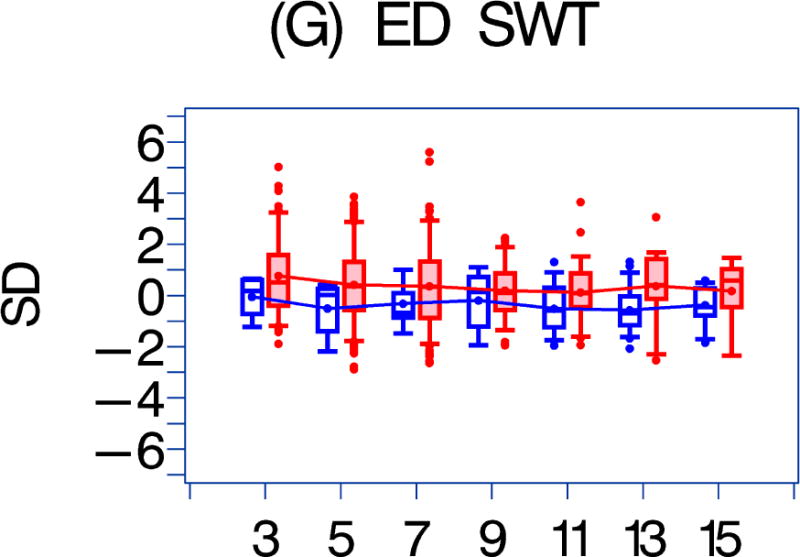
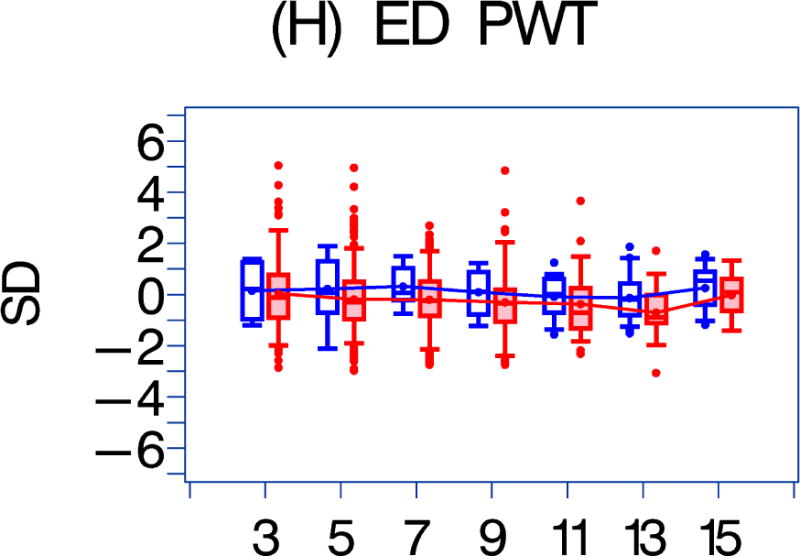
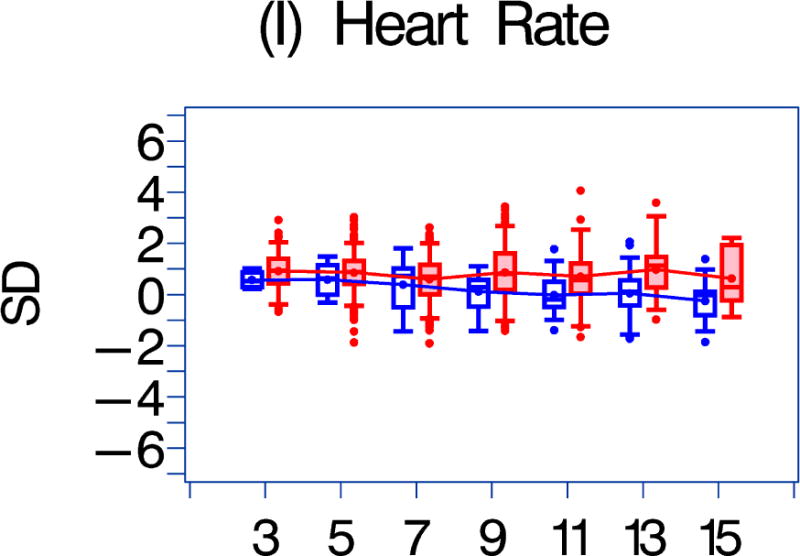
Using GEE adjusted for cohort, gender, race-ethnicity, age, duration of HAART exposure, nadir CD4%, and most recent HIV viral load (HIV RNA copies/ml), echocardiographic parameters were compared between HAART-unexposed (RED) and HAART-exposed (BLUE) groups: The X-axis is years of follow-up. The Y-axis is number of standard deviations from the mean (Z-score). The p values represent interaction between HAART exposure status and years of follow-up. 1A. LV fractional shortening Z-score. (p = 0.0167); 1B. LV contractility (LV stress velocity index) Z-score. (p = 0.0023); 1C. LV afterload (LV end-systolic stress) Z-score. (p = 0.1844); 1D. Systolic blood pressure Z-score. (p = 0.0435); 1E. LV mass Z-score. (p = 0.0135); 1F. LV end-systolic dimension Z-score. (p = 0.1258); 1G. End-diastolic septal wall thickness Z-score. (p < 0.0013); 1H. LV end-diastolic posterior wall thickness Z-score (p = 0.9091); 1I. HAART-unexposed versus HAART-exposed heart rate Z-score (p = 0.3321).
